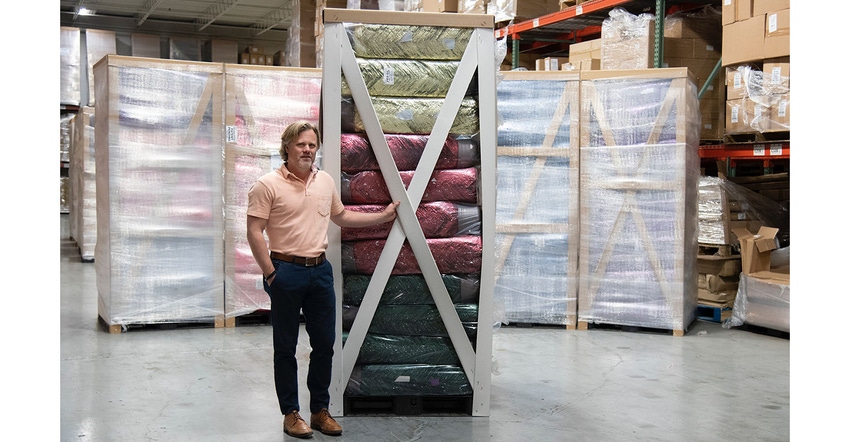Paklite Shipping System Set to Revolutionize Floral Industry
The lightweight system developed by Flopak USA reportedly cuts shipping costs by as much as 50%.
April 13, 2021

Getting flowers and plants from growers to the warehouses where they are prepared for consumers is big business. Flopak USA has developed what it calls a "revolutionary" shipping system that delivers the floral and plant packaging supplies in a whole new way.
Flopak’s patent-pending Paklite shipping system cuts freight costs as much as 50% and delivers floral products in a format that creates game-changing operational efficiencies for growers and retailers, according to the company. The Paklite shipping system places floral pot covers into space-efficient tubes. These lightweight durable tubes are stacked within a fiberboard skeleton, using a pallet as a foundation. The product is then shrink-wrapped, ready for shipping. The resulting weight decrease brings substantial savings on shipping costs, often 40 to 50%, according to Flopak.
Paklite can ship 86,000 pot covers on a single pallet, up to a 327% increase over traditional pallet and box systems. Because of the efficiency of the new system, stock is tighter, allowing for up to 600 units in a sleeve; previous systems held only 250. Additionally, the lightweight sleeves, weighing as little as four pounds each, can be easily carried and used in the warehouse.
Growers use the pot covers to assemble plants before shipping them to retailers. It is essential that they can store, access, and lift floral packaging products with ease, said Flopak’s announcement. The Paklite system was developed after noticing the significant challenges growers faced, and it is expected to change the way the entire floral packaging industry packs and ships products.
“With traditional packing and shipping, we were paying to ship a lot of air because of inefficient use of space,” said Mike Greene, Managing Partner at Flopak USA. “We can put much more product on a pallet than before, taking up about 50% less warehouse space for growers, and allowing workers to move products with more ease and to complete their work in less time. It has made a huge difference for our customers.”
About the Author(s)
You May Also Like




